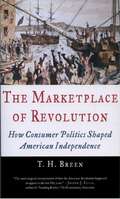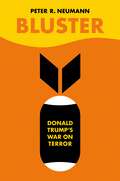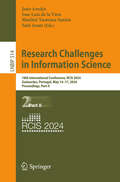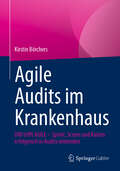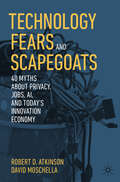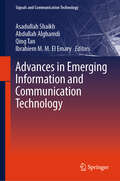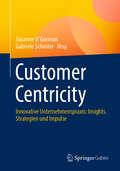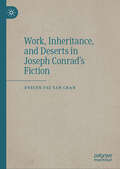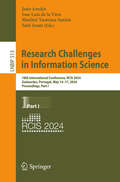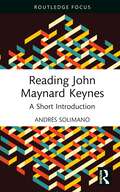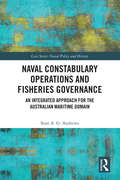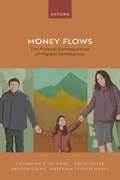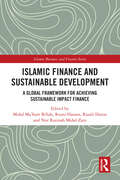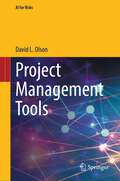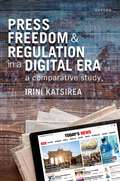- Table View
- List View
Fueling State Capitalism: How Domestic Politics Shapes Foreign Investments of National Oil Companies (STUDIES COMPAR ENERGY ENVIRON POL SERIES)
by Andrew CheonIn the late 1990s, governments began investing hundreds of billions of dollars in foreign oil and gas assets through their national oil companies (NOCs), raising concerns about a "resource war" and asymmetric interdependence. Most critics perceive the foreign investments of NOCs as politically driven and inefficient. In Fueling State Capitalism, however, Andrew Cheon sees these investments as commercial ventures by ambitious state-owned enterprises seeking to become global players amid rising oil prices. Some have invested aggressively abroad, often in politically risky destinations, whereas others have been more moderate in their ambitions. The NOCs' capacity to pursue foreign investments varies, as Cheon argues, according to regime types and bureaucratic structures of their governments. Using principal agent theory, Cheon shows that competition among NOCs' principals at two different levels of government--national and bureaucratic--conditions the foreign investments of NOCs. While competition between the chief executive and opposition parties can limit democratic governments' capacity to tolerate failed investments abroad, non-democratic governments are less constrained. An overlap of authority among bureaucratic institutions can also encourage counterproductive behavior among NOCs, whereas a clear line of authority among them can prevent it. Looking at investments from 79 countries from 2000 to 2013, as well as case studies of China, India, Brazil, Norway, and Russia, Fueling State Capitalism unpacks the role of institutions, both national and bureaucratic, in shaping the global expansion of national energy firms. Moreover, Cheon probes the energy security motivations of NOC investments and the origins of bureaucratic structures. Based on the experience of NOC global expansion, Cheon concludes that bureaucratic institutions will be critical in achieving decarbonization that not only allows governments to meet their political objectives, but also helps NOCs ensure their long-term commercial viability through a managed transition to renewable energy.
The Marketplace of Revolution: How Consumer Politics Shaped American Independence
by T. H. BreenThe Marketplace of Revolution offers a boldly innovative interpretation of the mobilization of ordinary Americans on the eve of independence. Breen explores how colonists who came from very different ethnic and religious backgrounds managed to overcome difference and create a common cause capable of galvanizing resistance. In a richly interdisciplinary narrative that weaves insights into a changing material culture with analysis of popular political protests, Breen shows how virtual strangers managed to communicate a sense of trust that effectively united men and women long before they had established a nation of their own. The Marketplace of Revolution argues that the colonists' shared experience as consumers in a new imperial economy afforded them the cultural resources that they needed to develop a radical strategy of political protest--the consumer boycott. Never before had a mass political movement organized itself around disruption of the marketplace. As Breen demonstrates, often through anecdotes about obscure Americans, communal rituals of shared sacrifice provided an effective means to educate and energize a dispersed populace. The boycott movement--the signature of American resistance--invited colonists traditionally excluded from formal political processes to voice their opinions about liberty and rights within a revolutionary marketplace, an open, raucous public forum that defined itself around subscription lists passed door-to-door, voluntary associations, street protests, destruction of imported British goods, and incendiary newspaper exchanges. Within these exchanges was born a new form of politics in which ordinary man and women--precisely the people most often overlooked in traditional accounts of revolution--experienced an exhilarating surge of empowerment. Breen recreates an "empire of goods" that transformed everyday life during the mid-eighteenth century. Imported manufactured items flooded into the homes of colonists from New Hampshire to Georgia. The Marketplace of Revolution explains how at a moment of political crisis Americans gave political meaning to the pursuit of happiness and learned how to make goods speak to power.
Bluster: Donald Trump's War on Terror
by Peter R. NeumannDefeating terrorism was one of Donald Trump's key campaign promises. But there is no easy way to make sense of Donald Trump's war on terror. Is it all bluster, aimed at mobilising his base, or does it represent a genuine shift from previous administrations? Since Trump took office, American counterterrorism has become more militaristic and less interested in causes and consequences. Relationships with foreign partners have deteriorated and right-wing extremists feel powerful and emboldened. The most significant change of paradigm-the conflation of terrorism, immigration, and Islam-has not just resulted in costly failures, such as the "Muslim ban," but also undermined the trust of immigrant communities and multiculturalism in the US. In Bluster, Peter Neumann assesses Trump's approach to countering terrorism, and argues that his war on terror looks strong and powerful in the short term, but will cause damage over time. The president has not just failed to provide a strategic framework for defeating terrorism; his entire approach has made the world less safe and undermined America's greatest 'soft power' asset-the very idea of America.
Personal Finance
by null Vickie L. BajtelsmitPersonal Finance, 3rd Edition offers essential skills and knowledge that will set students on the road to lifelong financial wellness. Byfocusing on real-world decision making, Bajtelsmit Personal Finance engages a diverse student population by helping them make personal connections that can immediately impact their current financial situations. Using a conversational writing style, relatable examples, and up-to-date coverage on important topics – such as student debt, housing, fintech and AI – students gain the knowledge they need to avoid early financial mistakes. By the end of the course, students have identified their goals and developed the problem-solving skills they need to build on as they progress to the next stages of life.
Enterprise GENERATIVE AI Well-Architected Framework & Patterns: An Architect's Real-life Guide to Adopting Generative AI in Enterprises at Scale
by Suvoraj BiswasElevate your AI projects with our course on Enterprise Generative AI using AWS's Well-Architected Framework, paving the way for innovation and efficiencyKey FeaturesLearn to secure AI environmentsAchieve excellence in AI architectureImplement AI with AWS solutionsBook DescriptionThe course begins with an insightful introduction to the burgeoning field of Generative AI, laying down a robust framework for understanding its applications within the AWS ecosystem. The course focuses on meticulously detailing the five pillars of the AWS Well-Architected Framework—Operational Excellence, Security, Compliance, Reliability, and Cost Optimization. Each module is crafted to provide you with a comprehensive understanding of these essential areas, integrating Generative AI technologies. You'll learn how to navigate the complexities of securing AI systems, ensuring they comply with legal and regulatory standards, and designing them for unparalleled reliability. Practical sessions on cost optimization strategies for AI projects will empower you to deliver value without compromising on performance or scalability. Furthermore, the course delves into System Architecture Excellence, emphasizing the importance of robust design principles in creating effective Generative AI solutions. The course wraps up by offering a forward-looking perspective on the Common Architectural Pattern for FM/LLM Integration & Adoption within the AWS framework. You'll gain hands-on experience with AWS solutions specifically tailored for Generative AI applications, including Lambda, API Gateway, and DynamoDB, among others.What you will learnApply Operational Excellence in AISecure Generative AI implementationsNavigate compliance in AI solutionsEnsure reliability in AI systemsOptimize costs for AI projectsIntegrate FM/LLM with AWS solutionsWho this book is forThis course is designed for IT professionals, solutions architects, and DevOps engineers looking to specialize in Generative AI. A foundational understanding of AWS and cloud computing is beneficial.
Research Challenges in Information Science: 18th International Conference, RCIS 2024, Guimarães, Portugal, May 14–17, 2024, Proceedings, Part II (Lecture Notes in Business Information Processing #514)
by João Araújo Jose Luis de la Vara Maribel Yasmina Santos Saïd AssarThis book constitutes the proceedings of the 18th International Conference on Research Challenges in Information Sciences, RCIS 2024, which took place in Guimarães, Portugal, during May 2024. The scope of RCIS is summarized by the thematic areas of information systems and their engineering; user-oriented approaches; data and information management; business process management; domain-specific information systems engineering; data science; information infrastructures, and reflective research and practice. The 25 full papers, 12 Forum and 5 Doctoral Consortium papers included in these proceedings were carefully reviewed and selected from 100 submissions. They were organized in topical sections as follows: Part I: Data and information management; conceptual modelling and ontologies; requirements and architecture; business process management; data and process science; security; sustainability; evaluation and experience studies Part II: Forum papers; doctoral consortium papers.
Agile Audits im Krankenhaus: DIN trifft AGILE - Sprint, Scrum und Kaizen erfolgreich in Audits einbinden
by Kirstin BörchersAudits im Krankenhaus werden oft noch sehr dokumentenlastig und auf ISO-Konformitätsprüfung ausgerichtet durchgeführt. Dabei geht es in Zeiten von E-Health, Digitalisierung und künstlicher Intelligenz (KI) im Krankenhaus längst um mehr und es ist vor allem eine flexiblere Herangehensweise gefordert. Die aktuellen Transformationsprozesse benötigen schnellere und dynamischere Anpassungen in der Organisation und bei den Abläufen. Mit Hilfe von agilen Audit-Instrumenten wie Scrum, Kaizen und Kanban können diese Herausforderungen gemeistert werden.Dieses Buch stellt nach einer Einführung in die Grundlagen von Audits die wichtigsten agilen Werte, Praktiken und Methoden vor, erläutert ihren möglichen Einsatz im Rahmen des allgemeinen Auditprozesses wie auch in den sogenannten „Audits im Sprint“. Agilität im Qualitätsmanagement und in der Durchführung interner Audits steht nicht im Widerspruch zum Leitfaden ISO 19011 „Auditierung von Managementsystemen“, in dem es um dieWirksamkeit und Eignung des QM-Systems sowie dessen Chancen zur Weiterentwicklung geht – sie ist vielmehr eine konsequente Weiterentwicklung. Best-Practice-Beispiele veranschaulichen, wie eine konkrete Umsetzung im Krankenhausumfeld aussehen kann.
Technology Fears and Scapegoats: 40 Myths About Privacy, Jobs, AI, and Today’s Innovation Economy
by Robert D. Atkinson David MoschellaTechnologies and tech companies are routinely accused of creating many societal problems. This book exposes these charges as mostly myths, falsehoods, and exaggerations. Technology Fears and Scapegoats debunks 40 widespread myths about Big Tech, Big Data, AI, privacy, trust, polarization, automation, and similar fears, while exposing the scapegoating behind these complaints. The result is a balanced and positive view of the societal impact of technology thus far. The book takes readers through the steps and mindset necessary to restore the West’s belief in technological progress. Each individual chapter provides a cogent and often controversial rebuttal to a common tech accusation. The resulting text will inspire conversations among tech insiders, policymakers, and the general public alike.
Advances in Emerging Information and Communication Technology (Signals and Communication Technology)
by Asadullah Shaikh Abdullah Alghamdi Qing Tan Ibrahiem M. M. El EmaryThe book presents the proceedings of the International Conference on Innovation of Emerging Communication and Information Technology (ICIEICT 2023), which took place September 11 to 13, 2023, virtually and in Madrid, Spain. The conference is devoted to communication, computer science, electrical and electronics engineering, telecommunication engineering, and information technology. The conference is intended to provide a forum for research scientists, engineers, educators, and practitioners throughout the world to learn, share knowledge, publish, and disseminate the most recent innovations and developments, ideas, and applications in all fields of science, technology and information technology.
Customer Centricity: Innovative Unternehmenspraxis: Insights, Strategien und Impulse
by Susanne O’Gorman Gabriele SchusterDieses Buch schlägt eine Brücke zwischen wissenschaftlicher Forschung zu Customer Centricity und ihrer praxisorientierten Anwendung. Das Interesse und die Begeisterung für Customer Centricity sind seit einigen Jahren ungebrochen, doch trotz reger Forschungstätigkeit und großem Interesse aus der Praxis scheitern viele Unternehmen nach wie vor an der Umsetzung. Zahlreiche Beitragsautor:innen betrachten in diesem Buch sowohl die Perspektive der Konsument:innen als auch der Unternehmen und integrieren zukunftsorientierte Ansätze wie Design Thinking, Augmented/Virtual Reality und CX-Plattformen. Die Leser:innen erhalten wissenschaftlich fundierte Handlungsempfehlungen für ein kundenzentriertes Unternehmen von praxiserfahrenen Expert:innen.Mit Beiträgen von:Prof. Dr. Laura-Maria AltendorferElaine BecraftProf. Dr. Thomas BolzProf. Dr. Benny BriesemeisterChristian FeddersenCharlotte FietzLivia FreudlTim GnanntProf. Dr. Stefan Godehardt-BestmannDr. Gregor ElbelProf. Dr. Katja GruppMatthias HackenbrachtProf. Dr. Cansu HattulaProf. Dr. Clare HindleyProf. Dr. Nicole KleinProf. Dr. Alexandra KühtePhilip MaloneyProf. Dr. Rico ManßProf. Dr. Astrid MühlböckProf. Dr. Bettina-Maria Müller Prof. Dr. Miriam O’SheaProf. Dr. Katharina RehfeldProf. Dr. Christian SchachtnerProf. Dr. Katrin E. ScheinProf. Dr. Uta ScheunertProf. Dr. Inga F. SchlömerProf. Dr. Benjamin Schulte Stephan SchusserMelanie StehrDr. Sascha TammTimo ThuencherNeal WesslingProf. Dr. Annegret Wittmann-Wurzer Prof. Dr. Nicola ZechProf. Dr. Matthias ZeisbergDr. Li Zeng
Work, Inheritance, and Deserts in Joseph Conrad’s Fiction
by Evelyn Tsz ChanThis book focuses on the complex relationships between inheritance, work, and desert in literature. It shows how, from its manifestation in the trope of material inheritance and legacy in Victorian fiction, “inheritance” gradually took on additional, more modern meanings in Joseph Conrad’s fiction on work and self-making. In effect, the emphasis on inheritance as referring to social rank and wealth acquired through birth shifted to a focus on talent, ability, and merit, often expressed through work.The book explores how Conrad’s fiction engaged with these changing modes of inheritance and work, and the resulting claims of desert they led to. Uniquely, it argues that Conrad’s fiction critiques claims of desert arising from both work and inheritance, while also vividly portraying the emotional costs and existential angst that these beliefs in desert entailed. The argument speaks to and illuminates today’s debates on moral desert arising from work and inheritance, in particular from meritocratic ideals. Its new approach to Conrad’s works will appeal to students and scholars of Conrad and literary modernism, as well as a wider audience interested in philosophical and social debates on desert deriving from inheritance and work.
Research Challenges in Information Science: 18th International Conference, RCIS 2024, Guimarães, Portugal, May 14–17, 2024, Proceedings, Part I (Lecture Notes in Business Information Processing #513)
by João Araújo Jose Luis de la Vara Maribel Yasmina Santos Saïd AssarThis book constitutes the proceedings of the 18th International Conference on Research Challenges in Information Sciences, RCIS 2024, which took place in Guimarães, Portugal, during May 2024. The scope of RCIS is summarized by the thematic areas of information systems and their engineering; user-oriented approaches; data and information management; business process management; domain-specific information systems engineering; data science; information infrastructures, and reflective research and practice. The 25 full papers, 12 Forum and 5 Doctoral Consortium papers included in these proceedings were carefully reviewed and selected from 100 submissions. They were organized in topical sections as follows: Part I: Data and information management; conceptual modelling and ontologies; requirements and architecture; business process management; data and process science; security; sustainability; evaluation and experience studies Part II: Forum papers; doctoral consortium papers.
Reading John Maynard Keynes: A Short Introduction (Routledge Focus on Economics and Finance)
by Andrés SolimanoThis book focuses on understanding the thinking of one of the greatest economists of the 20th century, John Maynard Keynes (JMK), stressing the evolution of his thinking from adherence to the classic Quantity Theory of Money to the development of his own novel theories of unemployment, stagnation and instability in modern capitalism and the need to have active policies to combat these malaises.The author dissects Keynes’s three main analytical works that shaped his thinking and policy recommendations: A Tract on Monetary Reform (1923); A Treatise on Money (1930); and The General Theory of Employment, Interest and Money (1936). Thia book undertakes a direct analysis of the texts of each of these three books themselves, rather than drawing on secondary literature studying what Keynes “wanted to say” according to other authors sympathetic or unsympathetic with Keynes’s ideas. It is an ideal text for a reader who wants to know in clear terms the thought of JMK and the historical context in which it evolved and developed.This book will be of significant interest to scholars, students and social researchers in various fields who are often surrounded by excessively technically oriented books about Keynes that often omit the history of ideas.
Reading John Maynard Keynes: A Short Introduction (Routledge Focus on Economics and Finance)
by Andrés SolimanoThis book focuses on understanding the thinking of one of the greatest economists of the 20th century, John Maynard Keynes (JMK), stressing the evolution of his thinking from adherence to the classic Quantity Theory of Money to the development of his own novel theories of unemployment, stagnation and instability in modern capitalism and the need to have active policies to combat these malaises.The author dissects Keynes’s three main analytical works that shaped his thinking and policy recommendations: A Tract on Monetary Reform (1923); A Treatise on Money (1930); and The General Theory of Employment, Interest and Money (1936). Thia book undertakes a direct analysis of the texts of each of these three books themselves, rather than drawing on secondary literature studying what Keynes “wanted to say” according to other authors sympathetic or unsympathetic with Keynes’s ideas. It is an ideal text for a reader who wants to know in clear terms the thought of JMK and the historical context in which it evolved and developed.This book will be of significant interest to scholars, students and social researchers in various fields who are often surrounded by excessively technically oriented books about Keynes that often omit the history of ideas.
Human Barrier Design and Lifecycle: A Cognitive Ergonomics Approach and Path Forward
by Tom ShephardA common source of failure in a human‑dependent barrier or safety critical task is a designed‑in mismatch error. The mismatch is a cognitive demand that exceeds the human capability to reliably and promptly respond to that demand given the plausible situations at that moment. Demand situations often include incomplete information, increased time pressures, and challenging environments. This book presents innovative solutions to reveal, prevent, and mitigate these and many other cognitive‑type errors in barriers and safety critical tasks. The comprehensive model and methodologies also provide insight into where and to what extent these barriers and task types may be significantly underspecified and the potential consequences.This title presents a new and comprehensive prototype design and lifecycle model specific to human‑dependent barriers and safety critical tasks. Designed to supplement current practice, the model is fully underpinned by cognitive ergonomics and cognitive science. The book also presents a compelling case for why a new global consensus standard specific to human‑dependent barriers is needed. Taking a novel approach, it presents its suggested basis, framing, and content. Both solutions seek to redress deficiencies in global regulations, standards, and practice. The model is guided by industry recommendations and best practice guidance and solutions from globally recognized experts. Its processes are fully explained and supported by examples, analysis, and well‑researched background materials. Real‑life case studies from offshore oil and gas, chemical manufacturing, transmission pipelines, and product storage provide further insight into how overt and latent design errors contributed to barrier degradation and failure and the consequence of those errors.An essential and fascinating read for professionals, Human Barrier Design and Lifecycle: A Cognitive Ergonomics Approach and Path Forward will appeal to those in the fields of human factors, process and technical safety, functional safety, display and safety system design, risk management, facility engineering, and facility operations and maintenance.Chapters 1 and 8 of this book are freely available as downloadable Open Access PDFs at http://www.crcpress.com under a Creative Commons Attribution-Non Commercial-No Derivatives (CC-BYNC-ND) 4.0 International license.
Human Barrier Design and Lifecycle: A Cognitive Ergonomics Approach and Path Forward
by Tom ShephardA common source of failure in a human‑dependent barrier or safety critical task is a designed‑in mismatch error. The mismatch is a cognitive demand that exceeds the human capability to reliably and promptly respond to that demand given the plausible situations at that moment. Demand situations often include incomplete information, increased time pressures, and challenging environments. This book presents innovative solutions to reveal, prevent, and mitigate these and many other cognitive‑type errors in barriers and safety critical tasks. The comprehensive model and methodologies also provide insight into where and to what extent these barriers and task types may be significantly underspecified and the potential consequences.This title presents a new and comprehensive prototype design and lifecycle model specific to human‑dependent barriers and safety critical tasks. Designed to supplement current practice, the model is fully underpinned by cognitive ergonomics and cognitive science. The book also presents a compelling case for why a new global consensus standard specific to human‑dependent barriers is needed. Taking a novel approach, it presents its suggested basis, framing, and content. Both solutions seek to redress deficiencies in global regulations, standards, and practice. The model is guided by industry recommendations and best practice guidance and solutions from globally recognized experts. Its processes are fully explained and supported by examples, analysis, and well‑researched background materials. Real‑life case studies from offshore oil and gas, chemical manufacturing, transmission pipelines, and product storage provide further insight into how overt and latent design errors contributed to barrier degradation and failure and the consequence of those errors.An essential and fascinating read for professionals, Human Barrier Design and Lifecycle: A Cognitive Ergonomics Approach and Path Forward will appeal to those in the fields of human factors, process and technical safety, functional safety, display and safety system design, risk management, facility engineering, and facility operations and maintenance.Chapters 1 and 8 of this book are freely available as downloadable Open Access PDFs at http://www.crcpress.com under a Creative Commons Attribution-Non Commercial-No Derivatives (CC-BYNC-ND) 4.0 International license.
The Therapeutic Power of the Maggie’s Centre: Experience, Design and Wellbeing, Where Architecture meets Neuroscience
by Caterina FrisoneThis book is about the therapeutic environment of the Maggie’s centre and explores the many ways this is achieved. With an unconventional architecture as required by the design brief, combined with Maggie’s psychological support programme, this special health facility allows extraordinary therapeutic effects in people, to the point that one can speak of therapeutic power.After tracing the story of the Maggie’s centre, the book reveals its fundamentals: Maggie’s Therapeutikos (the-mind-as-important-as-the-body), the Architectural Brief and the ‘Client-Architect-Users’ Triad. It continues by unfolding Maggie’s synergy-that between people and place-which increases users’ psychological flexibility helping them tolerate what was intolerable before. Although comfort and atmospheres are paramount, they are not enough to define the therapeutic environment of the Maggie’s centre. Only by looking at neuroscience that can give us scientific explanations of empathy, feelings and emotions and only considering space neither neutral nor empty, but full of forces that envelop people in an embodied experience, can we explain what generates wellbeing in a Maggie’s centre.The book concludes by critically evaluating the Maggie’s centre as a model to be applied to other healthcare facilities and to architecture in general. It is essential reading for any student or professional working on therapeutic environments.
The Therapeutic Power of the Maggie’s Centre: Experience, Design and Wellbeing, Where Architecture meets Neuroscience
by Caterina FrisoneThis book is about the therapeutic environment of the Maggie’s centre and explores the many ways this is achieved. With an unconventional architecture as required by the design brief, combined with Maggie’s psychological support programme, this special health facility allows extraordinary therapeutic effects in people, to the point that one can speak of therapeutic power.After tracing the story of the Maggie’s centre, the book reveals its fundamentals: Maggie’s Therapeutikos (the-mind-as-important-as-the-body), the Architectural Brief and the ‘Client-Architect-Users’ Triad. It continues by unfolding Maggie’s synergy-that between people and place-which increases users’ psychological flexibility helping them tolerate what was intolerable before. Although comfort and atmospheres are paramount, they are not enough to define the therapeutic environment of the Maggie’s centre. Only by looking at neuroscience that can give us scientific explanations of empathy, feelings and emotions and only considering space neither neutral nor empty, but full of forces that envelop people in an embodied experience, can we explain what generates wellbeing in a Maggie’s centre.The book concludes by critically evaluating the Maggie’s centre as a model to be applied to other healthcare facilities and to architecture in general. It is essential reading for any student or professional working on therapeutic environments.
Naval Constabulary Operations and Fisheries Governance: An Integrated Approach for the Australian Maritime Domain (ISSN)
by Sean A. AndrewsThis book offers an analysis of naval constabulary operations, in particular Australian fisheries patrols, and challenges the widely accepted Anglo-American school of maritime thought.In the Indo-Pacific, fisheries and the activities of fishing boats are of increasing strategic importance in Australia’s region – Australia’s Four Oceans. Issues of overfishing, population growth and climate change are placing growing pressure on fish as a resource, and in doing so are making fisheries more significant, and significant on a strategic as opposed to simply an economic or environmental level. When, combined with the growing use of fishing vessels as para-naval forces, it is clear that the activities of fishing vessels, whether fishing or not fishing, are matters of considerable strategic relevance. This book illuminates contemporary seapower challenges, explains and defines maritime security and examines and refines existing theory to advance a set of new or refined concepts to help frame the on-water activities of constabulary operations -- reducing the possibility of on-water miscalculation between states.This book will be of much interest to students and scholars of naval studies and sea power, maritime strategy, maritime security and International Relations.
Naval Constabulary Operations and Fisheries Governance: An Integrated Approach for the Australian Maritime Domain (ISSN)
by Sean A. AndrewsThis book offers an analysis of naval constabulary operations, in particular Australian fisheries patrols, and challenges the widely accepted Anglo-American school of maritime thought.In the Indo-Pacific, fisheries and the activities of fishing boats are of increasing strategic importance in Australia’s region – Australia’s Four Oceans. Issues of overfishing, population growth and climate change are placing growing pressure on fish as a resource, and in doing so are making fisheries more significant, and significant on a strategic as opposed to simply an economic or environmental level. When, combined with the growing use of fishing vessels as para-naval forces, it is clear that the activities of fishing vessels, whether fishing or not fishing, are matters of considerable strategic relevance. This book illuminates contemporary seapower challenges, explains and defines maritime security and examines and refines existing theory to advance a set of new or refined concepts to help frame the on-water activities of constabulary operations -- reducing the possibility of on-water miscalculation between states.This book will be of much interest to students and scholars of naval studies and sea power, maritime strategy, maritime security and International Relations.
Money Flows: The Political Consequences of Migrant Remittances
by Prof Catherine De Vries Prof David Doyle Dr Hector Solaz Dr Katerina TertytchnayaRemittances, the repatriated earnings of emigrant workers, have risen spectacularly in recent decades. They are a crucial lifeline for the households that receive them and one of the largest sources of capital for developing economies, outstripping both aid and foreign direct investment. Money Flows studies how remittances shape the relationship between remittance recipients and the authorities in migrant-sending countries by providing a comprehensive study of the political effects of remittances on the attitudes of their recipients. It argues that far from being an exclusively economic risk-sharing mechanism between poorer, migrant-sending, and richer, migrant-receiving economies, remittances may compromise rudimentary accountability mechanisms in the developing world. The book leverages survey data from Central-Eastern Europe, the Caucasus, and Central Asia and original focus groups from Kyrgyzstan. It shows how remittances, and fluctuations in their volume, colour recipients' economic evaluations; shape the burden of corruption; and change how recipients interact with, and view their state, ultimately impacting the approval function of the authorities.
Islamic Finance and Sustainable Development: A Global Framework for Achieving Sustainable Impact Finance (Islamic Business and Finance Series)
by Mohd Ma’Sum Billah Rusni Hassan Razali Haron Nor Razinah Mohd ZainThe interest in improving Environmental, Social and Governance (ESG) outcomes among stakeholders of Islamic banking and finance has become front and centre in the discussions relating to Islamic sustainable finance.This book offers an expansive overview of the relevant issues, global initiatives and trends in the management, governance, and operation of Islamic sustainable impact finance. It identifies the models and mechanisms required to achieve sustainable impact finance in the context of Islamic investment and project development and collects and observes the latest approaches in maintaining and fulfilling the principles of Shariah-compliance in Sustainable Development Goals and Environmental, Social and Governance-oriented projects. The book also explores conventional financing instruments, which are being used in modern practice.While Islamic sustainable finance provides a positive change in the Islamic banking and finance industry globally, implementing it is not without its challenges. Such challenges, such as the fulfilment of Shariah-compliance requirements, both legally and jurisprudentially, and the application and development of modern innovative products and hybrid models of classical products are highlighted and addressed in the book. The book delves into the current management practices of Islamic banking and finance, which promote Islamic sustainable impact finance and outlines strategies for meeting sustainable investments and projects. Other factors, such as the latest technology, regulations and social, political and economic policies are also considered. Evidence is provided via case studies from selected countries that participate actively in the Islamic banking and finance industry globally.The book will attract a wide audience from researchers, scholars, and students to stakeholders of Islamic banking and finance, regulators, policy makers and Shariah-compliant practitioners.
Islamic Finance and Sustainable Development: A Global Framework for Achieving Sustainable Impact Finance (Islamic Business and Finance Series)
The interest in improving Environmental, Social and Governance (ESG) outcomes among stakeholders of Islamic banking and finance has become front and centre in the discussions relating to Islamic sustainable finance.This book offers an expansive overview of the relevant issues, global initiatives and trends in the management, governance, and operation of Islamic sustainable impact finance. It identifies the models and mechanisms required to achieve sustainable impact finance in the context of Islamic investment and project development and collects and observes the latest approaches in maintaining and fulfilling the principles of Shariah-compliance in Sustainable Development Goals and Environmental, Social and Governance-oriented projects. The book also explores conventional financing instruments, which are being used in modern practice.While Islamic sustainable finance provides a positive change in the Islamic banking and finance industry globally, implementing it is not without its challenges. Such challenges, such as the fulfilment of Shariah-compliance requirements, both legally and jurisprudentially, and the application and development of modern innovative products and hybrid models of classical products are highlighted and addressed in the book. The book delves into the current management practices of Islamic banking and finance, which promote Islamic sustainable impact finance and outlines strategies for meeting sustainable investments and projects. Other factors, such as the latest technology, regulations and social, political and economic policies are also considered. Evidence is provided via case studies from selected countries that participate actively in the Islamic banking and finance industry globally.The book will attract a wide audience from researchers, scholars, and students to stakeholders of Islamic banking and finance, regulators, policy makers and Shariah-compliant practitioners.
Project Management Tools (AI for Risks)
by David L. OlsonThis book is devoted to presenting models that have been applied in project management. There are a variety of project domains. We discuss engineering/construction projects, software development projects, massive projects to include governmental undertakings, and pharmaceutical product development. Chapter 1 gives an overview of projects, and discusses the difficulties in completing projects on time, within budget, and at designed functionality. While the successful completion of a project is a challenge, there are some things that can be done to improve the probability of a project’s success. The book reviews a number of project management concepts. These include developing organizational ability to work on projects, as discussed in Chapters 2 and 3. Sponsor expectations can be based on better information if a good job of project development, estimation and selection is conducted, as discussed in Chapters 4, 5 and 6. Project planning tools involving the critical path method are covered in Chapter 7. Tools to evaluate project risk are covered in Chapter 8. The critical chain method is covered in Chapter 9. Chapter 10 discusses means to rush projects when circumstances demand, to include project crashing as well as Agile and SCRUM approaches used in software engineering projects. Chapter 11 covers project implementation and control, including assessment of delay responsibility.
Press Freedom and Regulation in a Digital Era: A Comparative Study
by Irini KatsireaThe processes of convergence and digitalization have altered the technological conditions in which the press operates. More than that, they have altered the environment in which the press stakes its claim to freedom and strives to protect its turf from other media players. The advent of internet-based services and applications has blurred the technological boundaries between the press, broadcasting, and telecommunications, challenging their regulatory silos. Press Freedom and Regulation in a Digital Era: A Comparative Study assesses the extent to which the emergent regulatory model for online news media is shaped by analogies from the past, or rather by a newly prevalent culture of control. By interweaving two distinct strands of analysis - the concepts of press freedom and regulation, and the phenomena of convergence and digitalization - this book examines the key implications of digitalization and assesses the challenges for press freedom in the nascent digital news ecosystem. Drawing upon decisions of the European Court of Human Rights (ECtHR), the Court of Justice of the European Union (CJEU), as well as from cases in Germany, the United Kingdom and the United States, this comparative work comprehensively explores the regulation of the press in the digital era and the impact of the proliferating media laws, policies, and jurisprudence on press freedom. Irini Katsirea identifies the regulatory ruptures that persist and makes concrete and timely recommendations for the evolving online news ecosystem.

